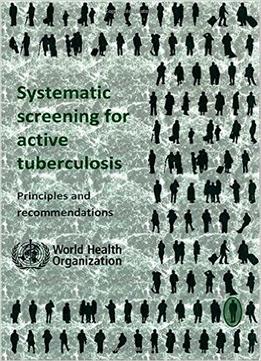
Systematic Screening For Active Tuberculosis: Principles And Recommendations
by World Health Organization /
2013 / English / PDF
1.7 MB Download
There have been calls to revisit the experiences of TB screening campaigns that were widely applied in Europe and North America in the mid-20th century, as well as more recent experiences with TB screening in countries with a high burden of the disease, and to assess their possible relevance for TB care and prevention in the 21st century. In response, WHO has developed guidelines on screening for active TB. An extensive review of the evidence has been undertaken. The review suggests that screening, if done in the right way and targeting the right people, may reduce suffering and death, but the review also highlights several reasons to be cautious. As discussed in detail in this book, there is a need to balance potential benefits against the risks and costs of screening; this conclusion is mirrored by the history of TB screening. This publication presents the first comprehensive assessment by WHO of the appropriateness of screening for active TB since the recommendations made in 1974 by the Expert Committee. However, the relative effectiveness and cost effectiveness of screening remain uncertain, a point that is underscored by the systematic reviews presented in this guideline. Evidence suggests that some risk groups should always be screened, whereas the prioritization of other risk groups as well as the choice of screening approach depend on the epidemiology, the health-system context, and the resources available. This book sets out basic principles for prioritizing risk groups and choosing a screening approach; it also emphasizes the importance of assessing the epidemiological situation, adapting approaches to local situations, integrating TB screening into other health-promotion activities, minimizing the risk of harm to individuals, and engaging in continual monitoring and evaluation. It calls for more and better research to assess the impact of screening and to develop and evaluate new screening tests and approaches.











